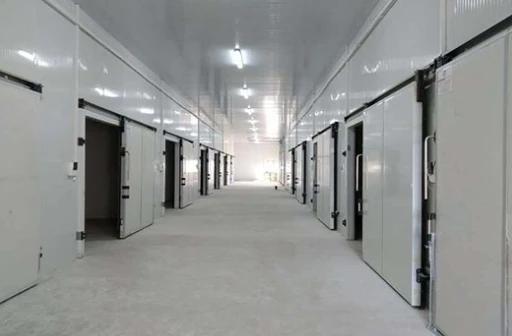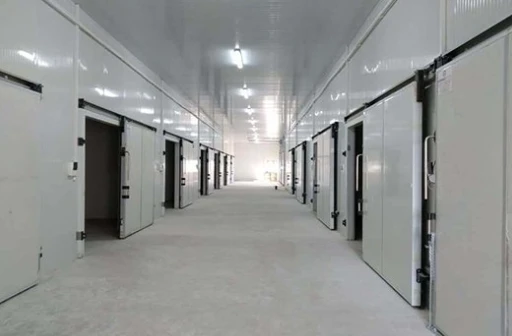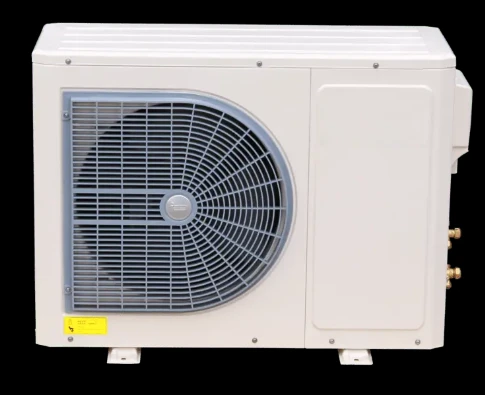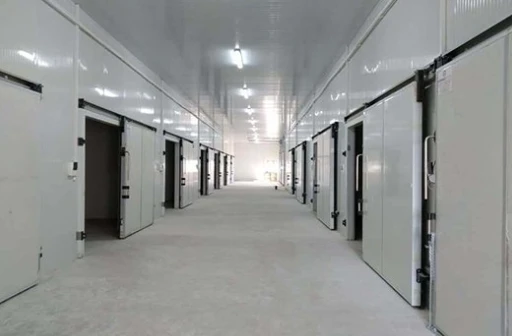Condensing Units High Efficiency Ratings
In the realm of refrigeration and air conditioning systems, condensing units play a pivotal role in maintaining optimal temperature control across diverse applications, from commercial refrigeration to industrial cooling and residential HVAC setups. Among the various types, air cooled condensing unit and side discharge condensing unit stand out for their efficiency, adaptability, and space-saving designs. These components are critical for converting high-pressure refrigerant vapor into a liquid, releasing heat into the environment and ensuring the proper functioning of the entire cooling cycle. This article delves into the technical specifications, operational advantages, and practical applications of these units, offering a comprehensive guide for engineers, facility managers, and business owners. By understanding their features and how they differ, you can make informed decisions to optimize cooling system performance, energy efficiency, and cost-effectiveness.
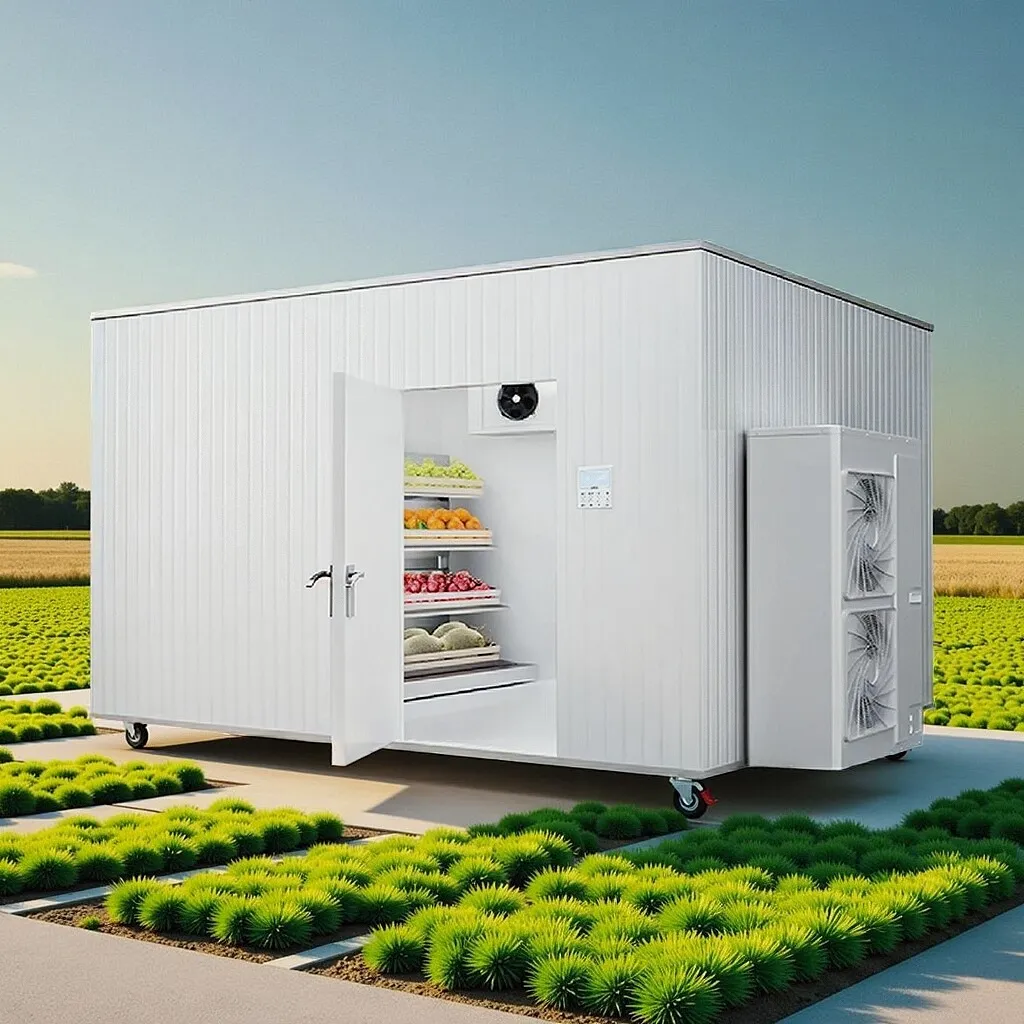
The Role and Basics of condensing units
A wae condensing is a core component of any vapor-compression refrigeration system, responsible for removing heat from the refrigerant and releasing it into the surrounding environment. It typically consists of a compressor, condenser coils, fan(s), and associated controls, working in tandem to facilitate the critical phase of the refrigeration cycle where gaseous refrigerant is converted into a liquid.
Key Components of a wae condensing:
- Compressor: Raises the pressure and temperature of the refrigerant, converting it from a low-pressure vapor to a high-pressure, high-temperature vapor.
- Condenser Coils: Finned metal tubes where the hot refrigerant vapor releases heat to the ambient air (in air-cooled units) or water (in water-cooled units), condensing into a liquid.
- Fan(s): Promotes airflow over the condenser coils to enhance heat dissipation, critical for maintaining efficient operation.
- Receiver Tank: Stores the condensed liquid refrigerant before it flows to the expansion valve for the next cycle.
Primary Functions:
- Heat Rejection: The most critical role, ensuring that heat absorbed by the refrigerant in the evaporator is effectively expelled, allowing the cycle to repeat.
- Refrigerant Phase Change: Facilitates the transition of refrigerant from vapor to liquid, which is essential for the cooling effect in the evaporator.
- System Pressure Control: Maintains optimal pressure levels in the refrigeration loop, preventing damage to components and ensuring consistent performance.
Applications Across Industries:
- Commercial Refrigeration: Cooling walk-in freezers, display cases, and ice machines in supermarkets, restaurants, and convenience stores.
- Industrial Cooling: Maintaining temperature control in manufacturing processes, such as plastic injection molding, chemical processing, and food production.
- HVAC Systems: Providing heat rejection for air conditioning units in residential and commercial buildings, ensuring comfortable indoor environments.
- Transportation Refrigeration: Cooling trailers and trucks to preserve perishable goods during transit.
The Design and Advantages of air cooled condensing unit
An air cooled condensing unit is a type of wae condensing that relies on ambient air as the cooling medium, eliminating the need for water or additional cooling infrastructure. This makes it highly versatile, especially in environments where water is scarce or where water-cooled systems are impractical.
Design Features:
- Airflow Mechanism: Utilizes one or more fans to draw ambient air over the condenser coils, transferring heat from the refrigerant to the air.
- Finned Coil Design: Enhanced surface area of the coils maximizes heat transfer efficiency, with materials like copper or aluminum chosen for their thermal conductivity.
- Weather Resistance: Constructed with galvanized steel or stainless steel casings to withstand outdoor conditions, including humidity, temperature fluctuations, and airborne contaminants.
Key Advantages:
- No Water Dependency: Ideal for regions with limited water supply or high water costs, reducing reliance on cooling towers, pumps, or water treatment systems.
- Easy Installation: Requires minimal plumbing, making it simpler to set up compared to water-cooled units, especially in retrofitting applications.
- Low Maintenance: Fewer moving parts related to water circulation mean reduced upkeep, such as cleaning cooling towers or preventing scale buildup.
- Flexible Placement: Can be installed outdoors, on rooftops, or in well-ventilated areas, as long as there is adequate airflow for heat dissipation.
Types of air cooled condensing units by Fan Configuration:
|
Fan Type |
Airflow Direction |
Noise Level |
Ideal for |
|
Axial Fans |
Parallel to the motor axis |
High |
Large-scale industrial applications |
|
Centrifugal Fans |
Radial airflow |
Medium |
Commercial refrigeration with space constraints |
|
EC (Electronically Commutated) Fans |
Variable speed, energy-efficient |
Low |
Residential and quiet commercial environments |
Exploring the Features of side discharge condensing unit
A side discharge condensing unit is designed with a specific airflow pattern where heat is expelled laterally (to the side) rather than vertically, making it a space-saving solution for installations with height restrictions or limited rooftop access. This design is particularly useful in urban settings or commercial spaces where vertical clearance is limited.
Unique Design Elements:
- Side-Mounted Fans: Fans are positioned on the side of the unit, pushing air horizontally across the condenser coils and discharging it to the side rather than upward.
- Compact Footprint: Shorter height compared to top-discharge units, allowing installation in tight spaces or under low ceilings.
- Directional Louvers: Guide airflow to prevent recirculation, ensuring that heated air is discharged away from the unit and not drawn back into the intake.
Key Benefits:
- Space Optimization: Ideal for installations where vertical space is limited, such as between buildings, under balconies, or in narrow alleyways.
- Reduced Noise Pollution: Side discharge often results in lower noise projection compared to top-discharge units, beneficial for residential areas or noise-sensitive environments.
- Improved Airflow Management: Directed discharge minimizes the risk of hot air recirculation, which can reduce cooling efficiency in top-discharge units installed in enclosed spaces.
- Aesthetic Compatibility: Can be easily concealed behind barriers or within architectural elements, maintaining a clean appearance in commercial or retail settings.
Typical Applications:
- Urban Commercial Buildings: Rooftops with low parapet walls or shared rooftop spaces where top-discharge units would interfere with other equipment.
- Retail Stores: Back-of-house installations in malls or shopping centers, where space behind the store or in service areas is limited.
- Food Service Establishments: Cooling walk-in coolers located in narrow kitchens or alongside other equipment, requiring efficient heat discharge without occupiesvertical space.
- Data Centers: Outdoor installations in urban data centers with strict height restrictions, ensuring reliable heat rejection in dense environments.
Comparing condensing units, air cooled condensing unit, and side discharge condensing unit
Understanding the differences between these units is crucial for selecting the right solution for your needs. The following comparison highlights their key attributes:
Functional Comparison:
|
Criteria |
condensing units (General) |
air cooled condensing unit |
side discharge condensing unit |
|
Cooling Medium |
Air, water, or glycol |
Air only |
Air only (side discharge) |
|
Discharge Direction |
Varies (top, side, or bottom) |
Top or side (depending on design) |
Side (lateral discharge) |
|
Installation Flexibility |
High (depends on type) |
Very high (no water needed) |
High (compact, 适合 limited vertical space) |
|
Energy Efficiency |
Varies by type and design |
Moderate to high (depends on fan efficiency) |
High (optimized airflow reduces recirculation) |
|
Noise Level |
Varies (top-discharge often noisier) |
Moderate (axial fans can be noisy) |
Low to moderate (directional discharge reduces noise projection) |
|
Ideal For |
All refrigeration systems |
Water-scarce environments |
Space-constrained, urban installations |
Installation and Maintenance Considerations:
- Air Cooled Units: Require regular coil cleaning to prevent dust/debris buildup, which can reduce heat transfer efficiency.
- Side Discharge Units: Need adequate side clearance to ensure unobstructed airflow, preventing hot air from recirculating into the intake.
- General condensing units: Always follow manufacturer guidelines for refrigerant type, electrical connections, and safety controls to ensure compliance and performance.
FAQS about condensing units, air cooled condensing unit, and side discharge condensing unit
How do I choose between an air cooled condensing unit and a water-cooled unit?
Choosing an air cooled condensing unit vs. a water-cooled unit depends on:
- Water Availability: Air-cooled units are ideal where water is scarce, expensive, or requires extensive treatment (e.g., hard water areas).
- Energy Costs: Water-cooled units are often more energy-efficient in moderate climates, but air-cooled units eliminate water-related costs (pumps, towers, treatment).
- Space and Installation Complexity: Air-cooled units are easier to install and maintain, while water-cooled units require plumbing and cooling tower space.
- Environmental Regulations: Some regions have strict water discharge regulations, making air-cooled units a more compliant choice.
What maintenance is required to keep a side discharge condensing unit operating efficiently?
To maintain a side discharge condensing unit:
- Coil Cleaning: Regularly remove dust, lint, and debris from condenser coils (quarterly or bi-annually) using compressed air or a soft brush to maintain heat transfer efficiency.
- Fan Inspection: Check fan blades for damage or imbalance, and lubricate fan motors according to the manufacturer’s schedule to prevent noise and reduced airflow.
- Refrigerant Levels: Monitor pressure gauges to ensure proper refrigerant charge, as undercharging or overcharging can lead to inefficiency or compressor damage.
- Airflow Path Check: Ensure side discharge louvers are unobstructed and that the surrounding area has adequate clearance to prevent hot air recirculation.
Can a side discharge condensing unit be installed in a confined outdoor space?
Yes, a side discharge condensing unit is well-suited for confined outdoor spaces due to its lateral airflow design. However, ensure:
- Clearance Requirements: Maintain at least 1 meter of clearance on the discharge side and 0.5 meters on the intake side to allow unobstructed air flow.
- Ventilation: If installed in a recessed area (e.g., between buildings), ensure there is the proper airflow path for heated air to escape, avoiding stagnation that could reduce efficiency.
- Weather Protection: While the unit is weather-resistant, placing it under a roof overhang can protect it from direct rain or snow accumulation, especially in extreme climates.
How does the efficiency of an air cooled condensing unit compare in hot climates?
In hot climates, the efficiency of an air cooled condensing unit can be affected by ambient temperature, as higher air temperatures reduce the temperature gradient for heat dissipation. However, modern units feature:
- High-Temperature Ratings: Designed to operate efficiently in ambient temperatures up to 45°C or higher, with advanced fan controls that increase speed during peak heat.
- Enhanced Coil Materials: Aluminum or copper fins with hydrophobic coatings to prevent dust adhesion and maintain heat transfer even in dusty, hot environments.
- Variable-Speed Fans: Adjust fan speed based on ambient temperature, reducing energy use during cooler periods and maximizing airflow during heat waves.
While efficiency may dip slightly in extreme heat, proper installation (e.g., shading the unit without obstructing airflow) can mitigate these effects.
What safety considerations should I follow when installing a wae condensing?
When installing any wae condensing:
- Refrigerant Handling: Use certified technicians to handle refrigerants, as some (e.g., ammonia, R-410A) are flammable or require special precautions.
- Electrical Safety: Ensure proper grounding, waterproof connections, and compliance with local electrical codes to prevent short circuits or electrocution risks.
- Stability: Install the unit on a level surface (e.g., concrete pad, rooftop mounts) to prevent vibration damage and ensure even weight distribution.
- Access for Maintenance: Leave sufficient space around the unit for technicians to inspect components, clean coils, and perform repairs safely.
Don’t compromise on cooling performance. Visit our website today to explore our comprehensive product line, request a personalized quote, or consult with our experts to find the perfect wae condensing for your application. Whether you’re upgrading an existing system or designing a new installation, our team is here to help you make an informed choice. Trust [Shijiazhuang Xuexiang Refrigeration Euquipment Co.,Ltd] for solutions that combine innovation, reliability, and expert support. Your search for the ideal wae condensing ends here—discover the difference the right equipment can make for your business.
-
Tube Ice Machine Cost EffectiveRongorongoSep.04,2025
-
IQF Freezer Locks in FreshnessRongorongoSep.04,2025
-
Condensers Reject Heat EfficientlyRongorongoSep.04,2025
-
Cold Room Door DurabilityRongorongoSep.04,2025
-
Chiller Reduces Energy CostsRongorongoSep.04,2025
-
Big Block Ice Machine Energy ConsumptionRongorongoSep.04,2025













































































































